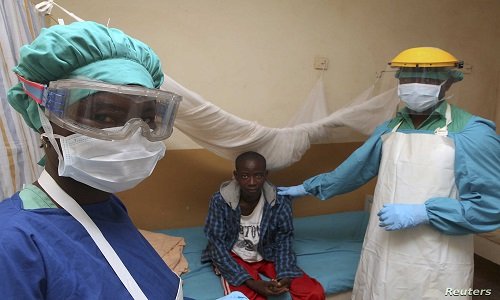The Lassa hemorrhagic fever (LHF), also known as Lassa fever, is a type of viral hemorrhagic fever caused by the Lassa virus. It is a zoonotic or animal-borne, acute viral illness. It is endemic in some parts of West Africa, especially in Nigeria, Sierra Leone, Liberia, Ghana and Guinea – though neighboring countries are also at risk, as the animal vector for Lassa virus, the “multimammate rat” (Mastomys natalensis) is distributed throughout the region.
Although descriptions of the disease, dated back to 1950s, the illness was first discovered and described in 1969 and it is named after the town Lassa in Borno State, where the first cases occurred.
Records show that an estimated 100,000 to 300,000 infections of Lassa fever occur annually, with approximately 5,000 deaths. Sadly, surveillance for Lassa fever is not standardised; therefore, the estimates are crude. In some areas of Sierra Leone and Liberia, it is known that 10-16 per cent of people admitted to hospitals annually have Lassa fever, demonstrating the serious impact the disease has on the region.
Read Also: Lassa fever death toll rises to 38 in 11 states
According to experts, many of those infected by the virus do not develop symptoms. So, when symptoms occur, they typically include fever, weakness, headaches, vomiting, and muscle pains.
Less commonly, there may be bleeding from the mouth or gastrointestinal tract – all this makes diagnosis a little bit difficult. The risk of death once infected is about one per cent and frequently occurs within two weeks of the onset of symptoms. Among those who survive, about a quarter have hearing loss, which improves within three months in about half of these cases.
The disease is usually initially spread to people via contact with the urine or feces of an infected multimammate mouse. Spread can then occur via direct contact between people. Diagnosis based on symptoms is difficult.
Confirmation is by laboratory testing to detect the virus’s RNA, antibodies for the virus, or the virus itself in cell culture. Other conditions that may present similarly include Ebola, malaria, typhoid fever, and yellow fever. The Lassa virus is a member of the Arenaviridae family of viruses.
There is no vaccine for Lassa fever. Therefore, prevention requires isolating those who are infected and decreasing contact with the mice.
Other efforts to control the spread of disease include having a cat to hunt vermin, and storing food in sealed containers. Treatment is directed at addressing dehydration and improving symptoms. The antiviral medication ribavirin has been recommended, but evidence to support its use is weak.
thenationonlineng.net

Putting a spotlight on business, inventions, leadership, influencers, women, technology, and lifestyle. We inspire, educate, celebrate success and reward resilience.















